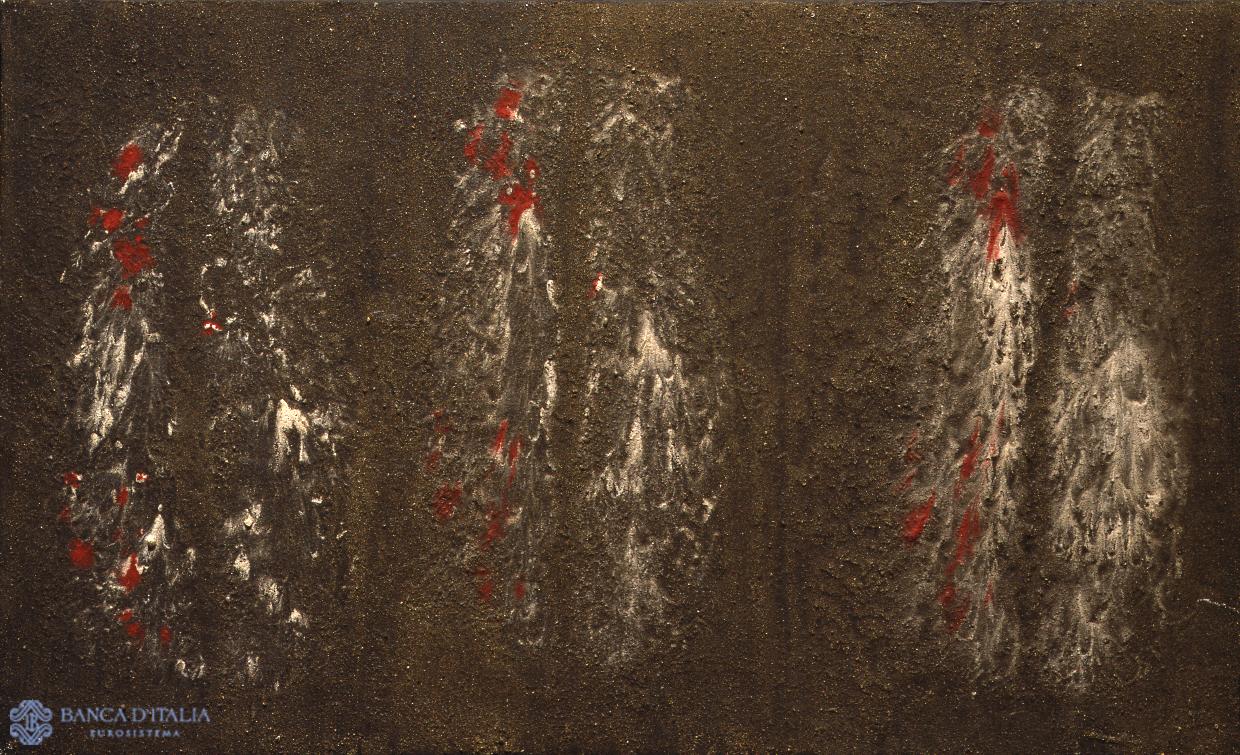Three double imprints rise vertically in the composition, saturating the space. The painting is serious, intransigent, almost hostile; the three bodies are raised on a bed of thick material binding the sand to the colour pigments using a fast-acting vinyl adhesive and appear as red and white tongues of flame arranged sequentially on the canvas. They seem to bear witness to an event which has left a painful echo in its wake.
In the summer of 1957 Scialoja discovered the impronta (the imprint) which he immediately conceived as a trace placed on reality by the intellect and, at the same time, by the artist’s feelings. Initially, the imprint was unclear, exploding over the canvas with no hierarchy or caution, spreading a dense tightly-packed material across the canvas. In its brief introductory season, this technique was related to the triumph of matter in a strand of European informal art. Gradually, starting in 1958 and more markedly from 1959, the imprint was organized into regular parts and in exact quantities that followed each other along the horizon of the canvas seeming to suggest the imprinting of a life event, and the memory of it that remains.
Antonio (Toti) Scialoja, Tre sabbie
Tre sabbie
20th century AD
Painting
Abstract

Artist
Date
1959
Material and technique
Sand and vinyl on canvas
Measurements
87 x 143 cm
Compiler
Fabrizio D'Amico
